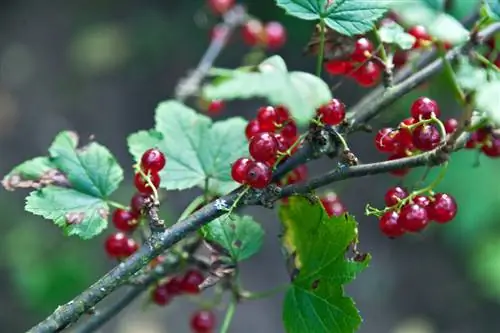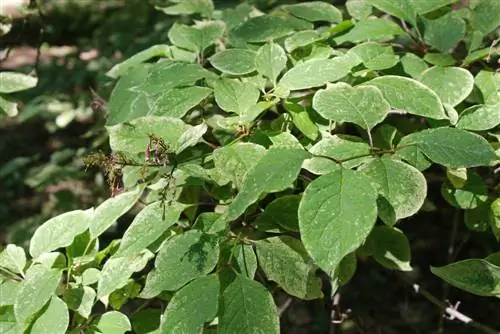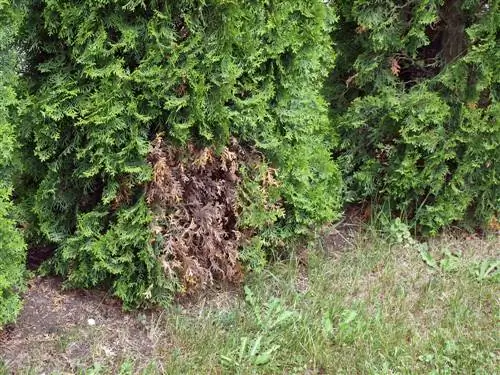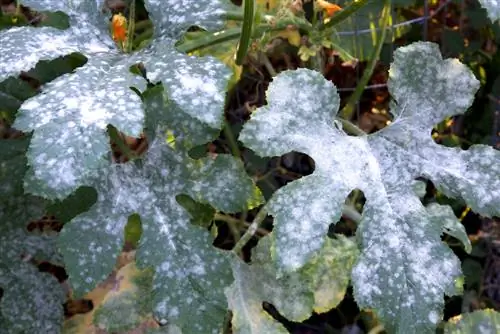- Author admin [email protected].
- Public 2023-12-16 16:46.
- Last modified 2025-01-23 11:21.
The rock pears are basically fairly robust and undemanding plants. Unfortunately, problems with fungal diseases often occur, which require repeated control measures.

How do you treat serviceberry pears for fungal infestation?
When fungus attacks on service pears, powdery mildew is often the cause, which appears as a white coating on leaves. Infected shoots should be quickly removed and disposed of. As a preventive measure, more resistant varieties can be planted, low-nitrogen fertilization can be applied and regular pruning can be carried out.
Detect fungal diseases clearly
If there are possible signs of a fungal infection on your serviceberry in the garden, you should first rule out other reasons for the abnormalities before taking appropriate countermeasures. There can be different reasons for changes in the leaf color of rock pears:
- premature red coloring of leaves due to climatic extremes
- Infestation with fire blight
- Fungal diseases such as powdery mildew
With the different varieties of serviceberry, it can sometimes happen that cold snaps or dry phases in summer cause the leaves to drop prematurely. In this case, no special care measures need to be taken. Individual leaves that turn red can also be a sign of fire blight infestation. However, this is not a fungal disease, but a plant disease caused by bacteria.
Identify and combat powdery mildew
Various factors such as the location, the variety planted, the weather or the proximity to other plants susceptible to powdery mildew can play a role in the occurrence of powdery mildew (fungus Podosphaera spec.) on rock pears. Powdery mildew can be recognized as a white coating on the leaves, with small white spots initially appearing on the top of the leaves, which then spread. The leaves then curl up and are promptly thrown off. This is a so-called “fair weather fungus” that cannot be kept in check simply by regular pruning and a suitably well-ventilated plant structure. However, any outbreak should be contained by removing infected shoots as quickly as possible and disposing of them with organic waste.
Prevention is more effective than treatment
Rock pears do not necessarily die due to powdery mildew, but in addition to the appearance of the plants, the usability of the actually edible fruits suffers. If powdery mildew occurs in a garden before the serviceberry is planted, more resistant wild forms should be preferred over cultivated varieties if possible. Fertilization with a low nitrogen content, like a well-dosed, regular cut, can strengthen the overall plant he alth. At the first signs of powdery mildew infestation, large areas of the affected shoots and buds in the infested area should be cut out, as the fungus overwinters in them. From spring onwards, preventive spraying should be carried out every 7 to 14 days with a 1:5 mixture of milk and water from the time of new growth.
Tip
If rock pears repeatedly suffer from fungal infestation over the years and are treated with appropriate fungicides, then the preparations selected for this purpose should be changed regularly. In this way you can prevent the development of fungicide resistance and ensure effectiveness.






